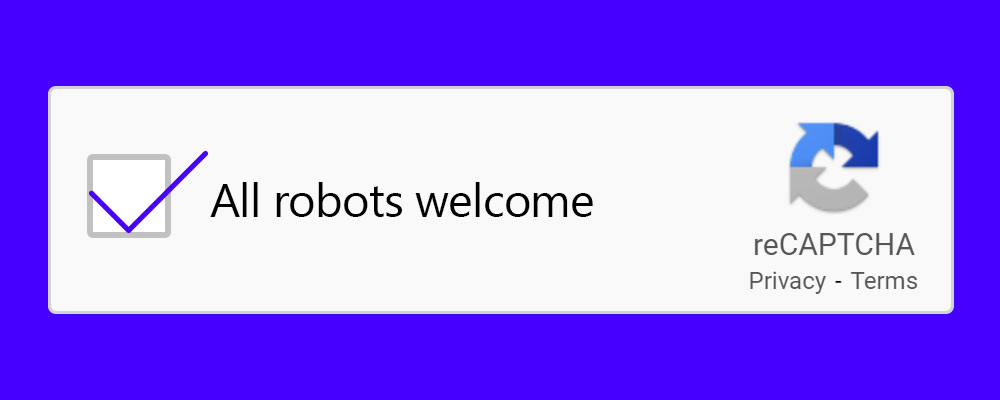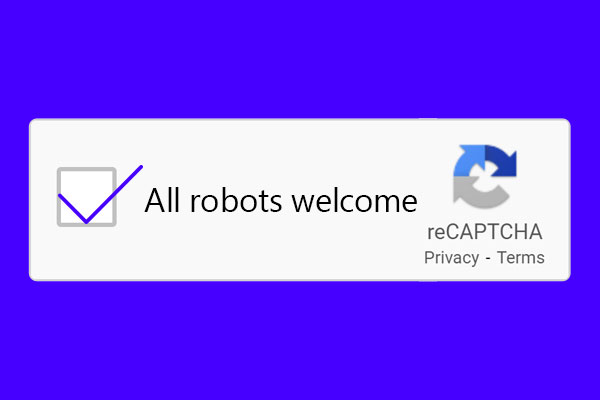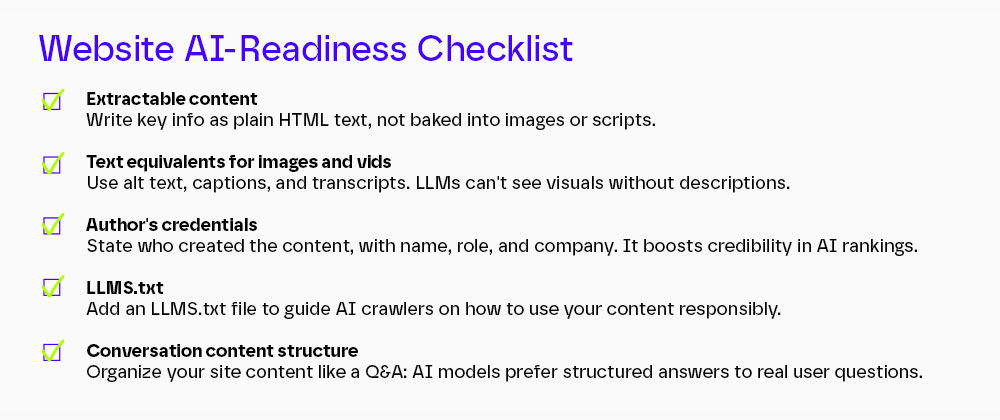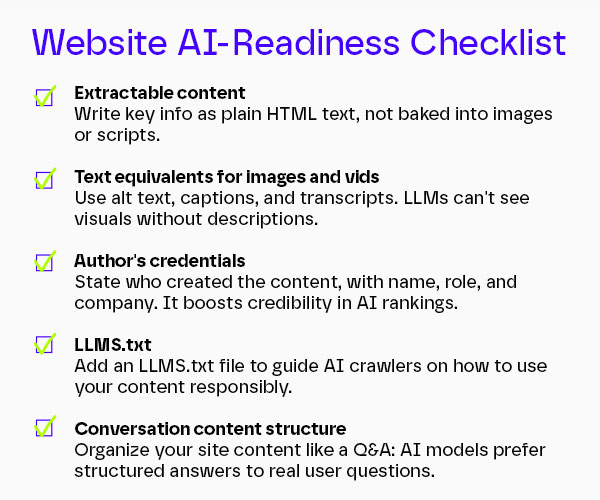Tired of AI already? You're not alone, but you're definitely in the minority, as the market still seems unsaturated with artificial solutions, automations, and integrations. Artificial intelligence is a buzzword, but it's also here to stay. It’s changing how people find information online everyday. So, let's make sure your digital channels are ready for it.
The website devourer is here. We herald its beginning, we herald their end. We herald the AI-only internet... Well, not exactly.
Tools like ChatGPT, Google's Gemini, and others handle billions of user queries, teaching people to expect fast, personalized answers. An AI bot might answer your customer's question instead of your website, unless your content is easy for AI to understand. Websites are still very relevant, but to stay visible, they need to "speak AI".
Think of AI systems as super-smart readers. An AI-ready website is one that these readers can easily parse and trust. In practice, this means clear structure and semantic markup: use proper headings, schema, and logical content hierarchy so AI knows what's what. A well-prepared site loads quickly, looks good on mobile devices, and utilizes metadata effectively.
What Makes a Website AI-Friendly?
To help AI understand your site, a few key things need to be in place:
Structured data: Add invisible labels to your content (like “this is a product” or “this is a review”) so AI knows exactly what’s on the page.
Clear page structure: Use proper headings and logical layout so your content is easy to follow. Think of it as giving AI a roadmap instead of a messy drawer.
Fast and mobile-friendly: AI tools prefer websites that load quickly and work well on phones. Slow, clunky sites get ignored.
Descriptive titles and content: Use clear language and meaningful headlines so AI can figure out what questions you're answering.
Trust signals: Show who wrote your content, link to reliable sources, and keep things accurate. AI tends to trust sites that act like experts, not salesy mystery boxes.
These things don’t just help AI. They actually make your website better for everyone, humans and robots.
How to Get There
Making your site AI-friendly mostly comes down to smart, simple web practices. Start with a quick audit: check for schema markup, unique titles and descriptions, and a clear heading structure.
Next, organize content clearly — especially around FAQs or how-to answers. Bullet points, Q&A formats, and simple phrasing help AI spot useful snippets. For example, if you answer “How do I reset my password?” in a blog post, don’t bury it halfway down the page. Make the answer obvious.
Another tip: avoid duplicate content. Keep one clear “source of truth” instead of repeating the same info across multiple pages. AI likes it clean, and you’ll save yourself from content chaos later.
Quick note: Getting AI-ready doesn’t mean installing a robot on your homepage. It just means cleaning up your content so both people and machines can understand it. It’s basically digital housekeeping.
Platforms and AI Capabilities
If you're using a modern CMS or DXP, you might already have some AI tools built in. For example, Kentico Xperience includes AIRA, an assistant that suggests content ideas or drafts emails. Umbraco takes a plug-and-play approach with an open marketplace for AI features.
Whether you're on Kentico, Umbraco, WordPress, or something custom — the platform helps, but solid content structure is what makes your site truly AI-friendly.
Common Pitfalls with AI implementation
Chasing hype: Adding a ChatGPT plugin won’t fix poor navigation or stale content. AI still requires quality to work with.
Overlooking structure: Pages full of images and scripts might wow users but confuse AI. Headings, alt text, and context matter.
Forgetting clarity: Use plain language. If you’re using acronyms or industry lingo, spell them out somewhere so AI — and readers — can follow along.
Sites that check these boxes tend to perform better across the board. As one expert put it, when you skip the AI basics, your content risks being “misinterpreted or ignored.” And no one wants their best advice left unread by a bot.
Getting To Work
The good news? Getting your site AI-ready usually makes it better for everyone. Faster pages, clearer content, and smarter structure that both users and search engines appreciate. Think of it like giving your website a sharper radar: suddenly, your content can tune into the AI-driven web that’s already here. So ask yourself - if AI landed on your homepage, would it know what to do, or bounce off baffled? If you're unsure, our digital transformation experts can help. Schedule a free consultation and let’s make your site smarter, faster, and ready for what’s next.
Interested in being more visible in AI overviews? Let's talk about structuring your website in AI-friendly way.






